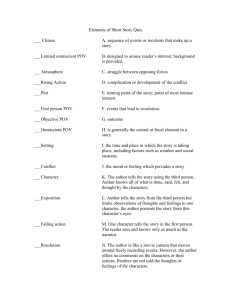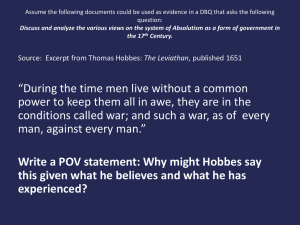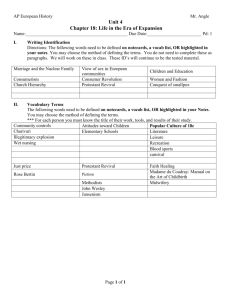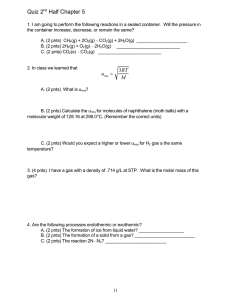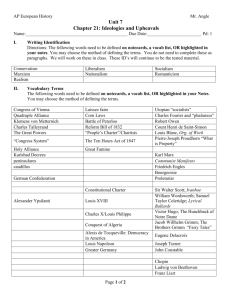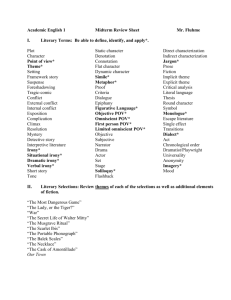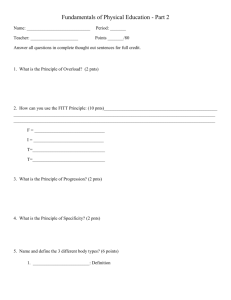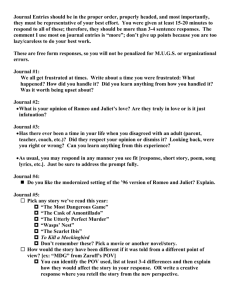File
advertisement
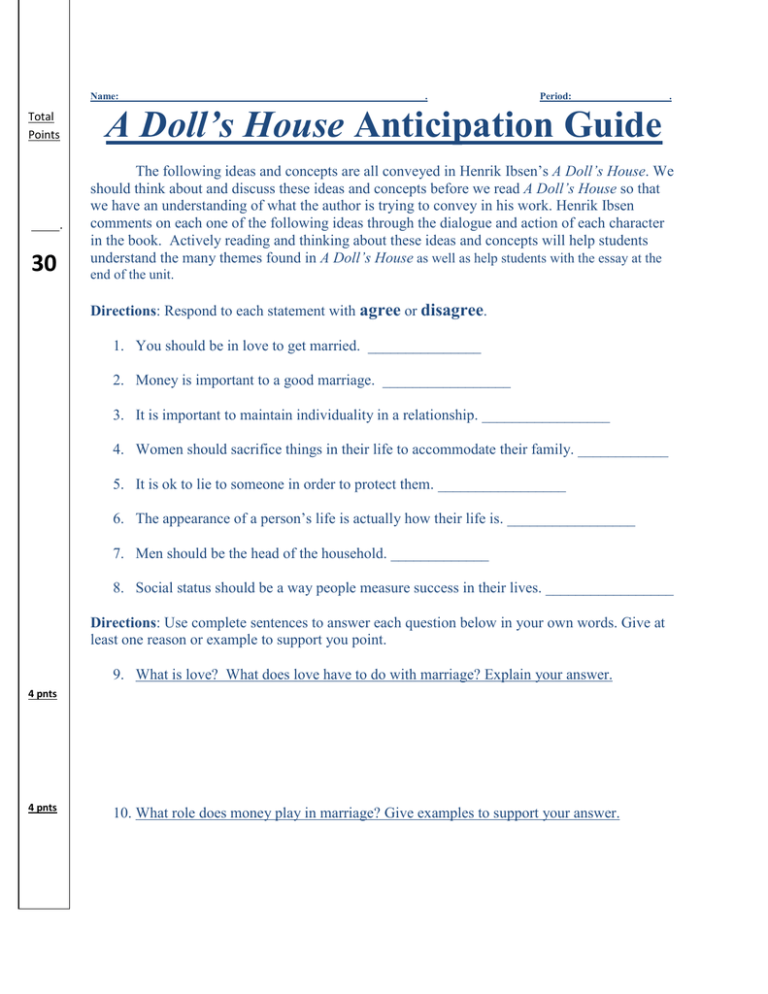
Name: Total Points . 30 . Period: . A Doll’s House Anticipation Guide The following ideas and concepts are all conveyed in Henrik Ibsen’s A Doll’s House. We should think about and discuss these ideas and concepts before we read A Doll’s House so that we have an understanding of what the author is trying to convey in his work. Henrik Ibsen comments on each one of the following ideas through the dialogue and action of each character in the book. Actively reading and thinking about these ideas and concepts will help students understand the many themes found in A Doll’s House as well as help students with the essay at the end of the unit. Directions: Respond to each statement with agree or disagree. 1. You should be in love to get married. _______________ 2. Money is important to a good marriage. _________________ 3. It is important to maintain individuality in a relationship. _________________ 4. Women should sacrifice things in their life to accommodate their family. ____________ 5. It is ok to lie to someone in order to protect them. _________________ 6. The appearance of a person’s life is actually how their life is. _________________ 7. Men should be the head of the household. _____________ 8. Social status should be a way people measure success in their lives. _________________ Directions: Use complete sentences to answer each question below in your own words. Give at least one reason or example to support you point. 9. What is love? What does love have to do with marriage? Explain your answer. 4 pnts 4 pnts 10. What role does money play in marriage? Give examples to support your answer. 11. What is individuality? Is it possible to be an individual in a relationship? Explain. 4 pnts 2 pnts 2 pnts 2 pnts 6 pnts 4 pnts 2 pnts 2 pnts 12. What is the most important component to a healthy relationship? Explain your answer. 13. What is a father’s/husband’s obligation to his family? Explain your answer. 14. What is a mother’s/wife’s obligation to her family? Explain your answer. 15. What makes a person a good parent? Give at least 3 detailed reasons to support your point. 16. What is social status? Is it important to maintain one’s social status? Explain your answer. 17. What is the difference between authenticity and appearance? Explain the differences. Anticipation Questions – Class Activity - Group Activity Pre-Activity – As a class, define point of view, assumption, and implication before students start the activity so that they understand the terminology that goes into critical thinking. Class Activity Have students respond to statements 1 – 8 on the front of the anticipation guide. They should write down their first initial response to each statement. After they have responded to each statement they should reread the statements and think about their reasons for answering the way they did. Once everyone is finished responding to and thinking about the statements, the teacher will randomly call on students to share their responses. Using Socratic questioning, the teacher will explore the student’s reasoning and rationale for their POV. Once that teacher has gone through all of the statements with the class and thoughts have been generated for each of the statements, use the rest of the class period to allow students to answer the actual questions. Group Activity Have students answer the questions on their own for homework. Questions should be finished before the group activity starts. Do not allow students to have writing utensils out during the group activity. Split the class up into groups of 3 or 4 and have them discuss the questions, not the statements. One person in the group will read their answer to their group and give them their reasoning for their answer. Then the other people in the group with ask at least 1 question about the meaning and clarity of their answer until each person in the group understands the point of view or at least until the groups’ questions have been answered. Then the next person reads the next question and their answer to the next question and everyone in the group asks at least one question about that person’s answer. This process will continue until all of the questions have been discussed by the group. If a group finishes the activity before the rest of the class have them go through the handout again having each person field different questions from the handout. This will give a variety of different points of view. The main point of the activity is not to find the correct answer, but to be able to explain how you came to your answer. Students shouldn’t focus what they think is right or what the other group members think are right. Students should focus the clarity of the answers and on what the reasons are for the answers. Critical Thinking Terms Point of View: A POV is a way of looking at life or a situation in life. Assumption: An idea that is supposed to be true that is the basis for a POV. It’s an idea that has not been proven to be true. Implication: A result or consequence of an action. An effect from an idea that is has been put in motion. Critical Thinking Questions Each answer to the questions on the Anticipation Guide shows the students’ POV. The following questions will help students analyze their POV to help them understand their thinking: Can you clarify your point? – Give more details to illustrate and show what you mean. What assumptions is your POV based on? – The ideas that must be true in order for your POV to be correct. What are the implications for your POV? – The effect or result of your POV if it was applied to life. Did you consider any other POV? – Other ways of looking at the issue at hand. I don’t know questions: What do you need to know in order to figure it out? Are there any terms that you do not understand that would help you figure it out? What comes to mind when you first hear the topic at hand? What do you know about the topic being discussed?
